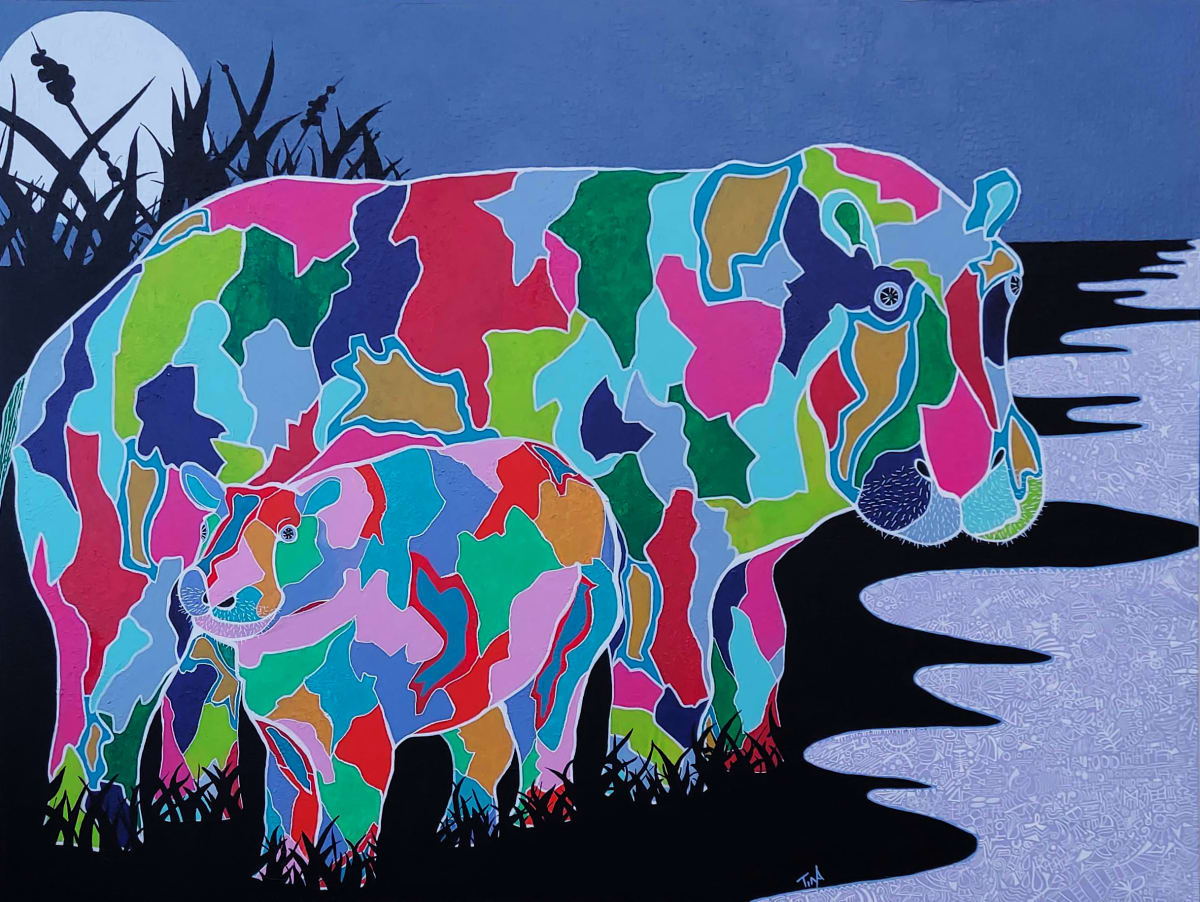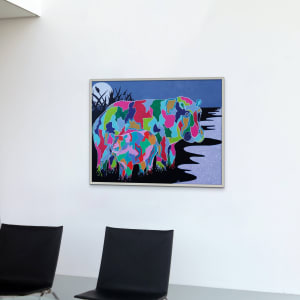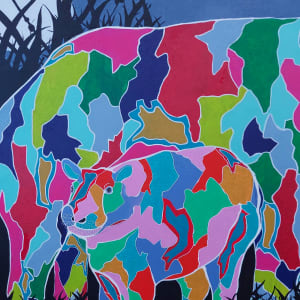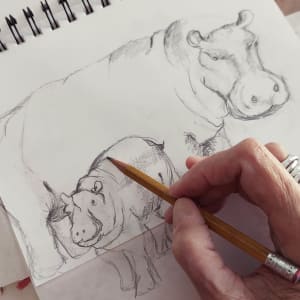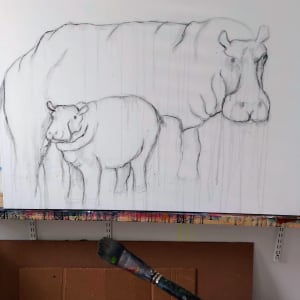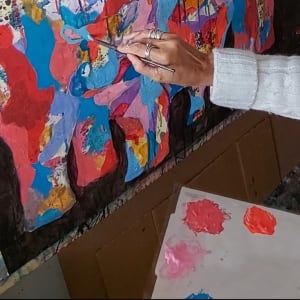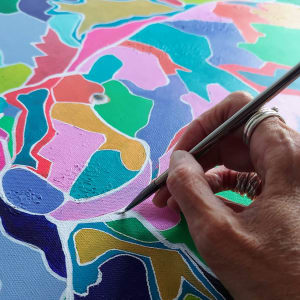Only available in prints.
Bringing awareness to the plights of hippos.
Vibrant colors infuse a sense of optimism reflecting hope rather than a depiction of despair.
The patchwork of shapes within their bodies echoes the way developers carve up land for urban expansion—a view I often reflect on when flying above landscapes, seeing the gridded marks of human encroachment. These fractured forms symbolize their eroding habitats and the intrusion of civilization into once-inaccessible territory.
As with much of my work, the final process involves carefully placing symbols that intersect cultures, objects, and moments in time. These clusters are my way of searching for balance—within the piece and within myself—amidst a chaotic world. It becomes a visual prayer, distilling complexity into a hopeful narrative of harmony and connection.
Due to human settlement, the common Hippo has been eradicated from several countries in Africa, and their populations are currently small and in decline.
They face significant threats such as habitat loss, climate change, and conflicts with humans. With the loss of their natural habitats, they are compelled to encroach upon human settlements, often resulting in their targeted killing due to the perceived threat to human life. Additionally, humans poach hippos in large numbers annually, driven by the demand for their meat, leather, and bones in various markets.
Preserving hippo habitats is of utmost importance. These animals play a crucial role in supporting aquatic ecosystems and are responsible for consuming tall and thick grasses that other animals rely on for grazing and movement within their habitats. Global warming exacerbates the issue as droughts reduce water levels, impacting the availability of water. Apart from the obvious survival reasons tied to water availability, hippos are susceptible to sunburn and therefore need to keep hydrated. Although they cannot swim, they spend the majority of their days immersed in water.
As a result of these challenges, hippos are currently classified as vulnerable.
Info sourced in large part from The Wildlife Conservation Society
- Subject Matter: Hippos
- Collections: Conservation Series

